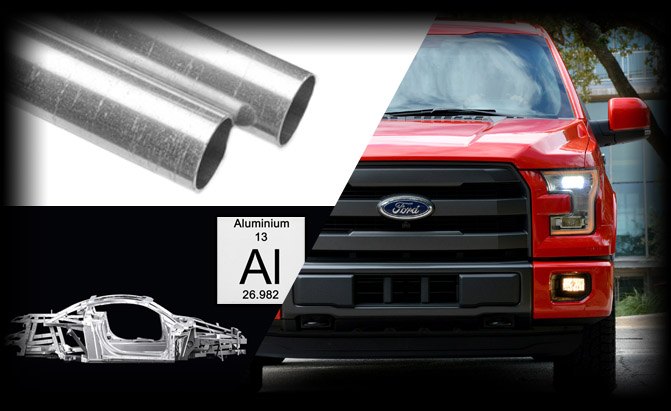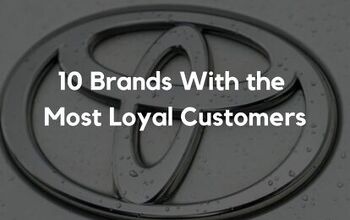Are Aluminum Vehicles Really More Expensive to Repair?

Thanks to its strength and lightness, aluminum has long been a mainstay of the aerospace industry, though it’s only just starting to make a noteworthy impact in the automotive space. But do elevated repair costs mean this material is more trouble than its worth?
The word on the street is this frosty silver metal is difficult to work with, something that supposedly makes patching up collision damage more expensive compared to steel. But just like in high school, you can’t believe every rumor you hear.
According to Doug Richman, vice president of engineering for Kaiser Aluminum and technical committee chairman at the Aluminum Transportation Group, this simply isn’t true. When it comes to repairing aluminum-intensive vehicles, he says, “They’re not more complex, they’re not more difficult. They’re different.”
“Technicians need aluminum-specific knowledge to do repairs properly,” he says. If they don’t have this training, he mentioned it’s not likely they would be able to fix things correctly and in a time-efficient manner.
Along with the Boeing 737 you were crammed into during your last trip to Vegas, aluminum is widely used in transportation applications where weight matters. Lighter vehicles are typically more fuel efficient and perform better. Audi has built vehicles out of this element for decades, championing its innovative space-frame technology as a way of building stronger, lighter vehicles.
SEE ALSO: Here’s Why There Will Never be a Buick Avista Unless China Wants It
Today, Ford is bringing aluminum to an even wider market. Dearborn’s ever-popular F-Series pickup truck family has made the switch from steel and lost a ton of weight in the process, figuratively speaking.
And this risky move is one that’s actually been validated by the insurance industry. According to both State Farm and Allstate, coverage rates for the new aluminum-bodied F-150 are comparable to its all-steel predecessor, something Ford strove for during development.
Part of the reason for this is that the truck was designed from the get-go with repairs in mind. Elizabeth Weigandt, dealer communications manager at Ford responded to our questions about the F-150. According to her, the truck’s rocker panels can be replaced in sections, as can its floor pan, which reduces repair time. Its B-pillars can be patched up without disturbing the roof and its apron tube can be fixed without removing the dashboard, more examples of time-saving engineering.
Work it, Baby!
Steel and aluminum couldn’t be more different. Yes, they’re both metals and, yes, they can both be formed into vehicle bodies and other components, but they each have special needs.
Richman said each material requires unique paint primers, specially coated fasteners, unique sealants and even completely different metal-working techniques.
“The typical procedure for a steel-bodied vehicle is the classic [method],” explained Richman. This involves a hammer and a dolly, the latter of which is sort of like a small, hand-held anvil. The hammer hits the metal surface and the dolly supports it from the back side. This method is used to smooth out wrinkles and dents in steel.
“That technique does not work with aluminum,” Richman said. Instead, he explained that aluminum needs to be heated before it can be smoothed out.
Additionally, unlike steel, aluminum is rarely welded when doing automotive body repair and there are several reasons why. For starters, it can be messy, plus it’s a challenge controlling the heat, meaning it’s easy to burn through thin-gauge body panels, but that’s not all.
SEE ALSO: 2018 Jeep Wrangler Won’t Go All Aluminum
“When you weld aluminum, you take out the strengthening, you take out the temper,” said Richman. “It’s much more reactive to the welding process.”
So, to attach new aluminum panels, they’re typically bonded and riveted in place, though General Motors has developed an innovative new spot-welding technique that’s been implemented on several of its new models.
Adding it All Up
Clearly, aluminum has different needs than its ferrous cousin, but that doesn’t mean it costs more to work with. “What we find is, the amount of time it takes to do a repair is about the same in steel or aluminum for technicians that are trained and know how to do the aluminum repair,” Richman said.
Not a lot of traditional body work – heating, beating and welding – is done these days because of high labor costs, which can run $100 an hour for steel and even more for aluminum. Because of this, many vehicles are repaired with pre-made kits provided by manufacturers. Whether steel or aluminum, these replacement panels make it easier and quicker to correct damage.
Weigandt with Ford shared similar information. She noted that with proper training and equipment, aluminum repairs should take a similar amount of time compared to steel, meaning the overall cost should work out to be about the same. Additionally, Richman said, “Every OEM has detailed repair procedures for every model and every year.” This means a qualified technician should have no issue fixing a car or truck, since the whole process is thoroughly documented.
Look for the Certificate
But whether your vehicle is made of aluminum or traditional steel, it’s important to take it to a qualified facility for collision work. “There’s roughly 33,000 known repair shops in North America today,” Richman said. According to him, about 15 percent of them have been certified by an OEM or I-CAR (Inter-Industry Conference on Auto Collision Repair) for working with aluminum.
It’s a similar story at Ford. To date, it has provided special training to more than 750 dealerships and 800 independent body shops in the U.S. These facilities are ready and able to handle major structural aluminum repairs right now.
And this ties into one point Richman strongly emphasized. Always look for a certified facility, preferably one that’s been checked out by I-CAR and the company that built your vehicle.
“Don’t even be distracted by a low estimate from a shop that’s not qualified,” he said. “If you don’t see the certificate on the wall, move on.” Both I-CAR and automakers will certify shops to work on their vehicles. Employees at these facilities have received special training, so you know they should do the job correctly the first time. And, according to Richman, they get audited to make sure they’re following proper repair procedures.
When it comes to repairing collision damage in a vehicle with an aluminum body, “It is different, not more expensive,” said Richman. And that’s something that will probably help this lightweight metal gain even more traction in the automotive business.
Check out our Top 10 Section

Born and raised in metro Detroit, Craig was steeped in mechanics from childhood. He feels as much at home with a wrench or welding gun in his hand as he does behind the wheel or in front of a camera. Putting his Bachelor's Degree in Journalism to good use, he's always pumping out videos, reviews, and features for AutoGuide.com. When the workday is over, he can be found out driving his fully restored 1936 Ford V8 sedan. Craig has covered the automotive industry full time for more than 10 years and is a member of the Automotive Press Association (APA) and Midwest Automotive Media Association (MAMA).
More by Craig Cole





































Comments
Join the conversation
An unbiased assessment from Kaiser Aluminum.
So the bottom line is, it costs more to repair. End of story. Every technique listed here is more time-consuming and more expensive than traditional steel repair.